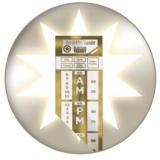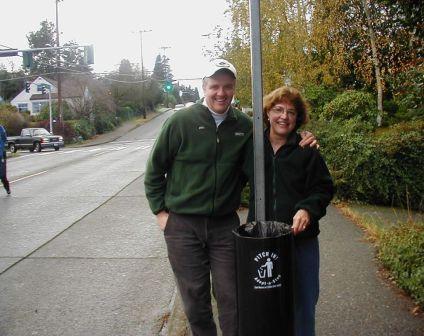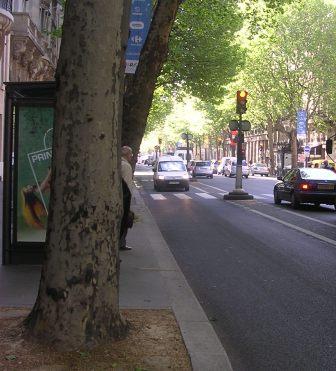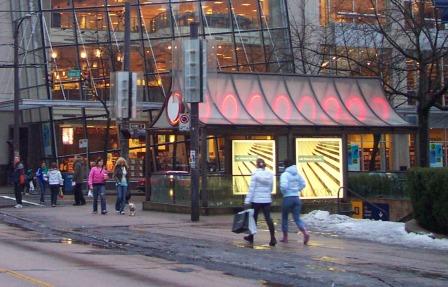Speaking of transit-inspired language…
[Note: This post is updated regularly as new terms are added.]
Bus luh, n: A bus-based interaction between two people who are attracted to each other. The interactions vary widely, but participants are always: riding on or waiting for a bus; in love, lust, or very deep like; and engaging in some sort of physical contact.
Bus mack, n: An attempted bus hook-up, in which one rider approaches another in a way that indicates romantic and/or sexual interest. On rare occasions, a bus mack can result in future instances of bus luh (see above).
Bus foul, n: An action or behavior–on a bus or at a bus stop–that negatively impacts other riders; a bus equivalent of a party foul. An example: taking up more than one seat when the bus is full. (For more examples, see above.)
Bus chick bag, n: A reusable bag that experienced riders use to carry bus necessities. These necessities might include: bus pass, wallet, book, cell phone, laptop, bus schedules, umbrella, gloves, hand warmers, flashlight, glue stick, Swiss Army knife, compass, notebook, pens, pencils, hair implements, plastic bags, chapstick, mascara, mp3 player, snacks, to-do list, city maps, lotion, antibacterial gel, digital camera… Bus chick bags take many forms but are most commonly backpacks.
Pack jam, n: An unfortunate incident that involves a strap or buckle of a rider’s bus chick bag (see above) becoming entangled with (or trapped beneath) some part of the bus or another rider at the moment the rider is preparing to disembark. This usually results in frantic shouts for the driver to “Wait!” and is often followed by extreme embarrassment.
Bus-wide discussion, n: A conversation that involves at least three passengers who were not previously acquainted and is conducted for the benefit of everyone on the bus. Common topics for bus-wide discussions: weather, elections, major sporting events, “the good old days.”
Lentement, a, n: Slow, either literally or figuratively; uncool; a person or object that exhibits the aforementioned characteristics.
This term can be applied beyond the world of public transportation.
Schmipod, n: A non-Apple (read: affordable) mp3 player (preferably with a radio tuner) that one can use to listen to music, podcasts, recorded books, and other audio delights on buses and at stops.
Bus crush, n:
1. Feelings of overwhelming admiration–occasionally, though not necessarily, of a romantic nature–for a fellow passenger; excessive interest in, or curiosity about, a fellow passenger.
2. The object of such admiration or interest.
BWI, v: Busing while intoxicated. Riding any form of public transportation while under the influence of alcohol or other (less legal) drugs. BWI is usually identified by the telltale scent of the intoxicating substance and its associated bizarre, antisocial, or otherwise transit-unfriendly behavior. (See also: bus foul, trife, Seahawks Special)
BDP, n: Bus driver’s pet or bus driver’s pest, depending on the circumstances. A person who sits in the front of the bus, in the seat nearest the driver, and engages the driver in conversation for the duration of their ride. BDPs tend to be regular riders and commonly offer advice and assistance (solicited and otherwise) to other passengers.
BCiT, n: Bus chick in training. A young person, usually under the age of 12, who is learning the bus-riding ropes. A BCiT always rides with an experienced bus chick while she masters basic bus survival skills, such as when to ring the bell, how and when to pay, and appropriate bus behavior–and then more advanced skills, including schedule-reading, trip-planning, and street safety. If she shows promise, she is permitted to ride without a mentor, and, eventually, initiated into the sisterhood of full-fledged bus chicks.
Bus legs, n: The ability to effectively balance oneself while standing or walking on a moving bus, no matter how unpredictable the traffic or inexperienced the driver.
The transfer trade, n The system of exchanging bus tickets, paper transfers, and bus passes for money or other items of value.
Stop sense, n: The ability to detect when one’s transit destination is approaching without looking out the window or at the digital display at the front of the vehicle; a subconscious awareness of the location of one’s transit stop.
Stop sense is essential for those who enjoy transit catnaps, regularly read while riding, or frequently find themselves sucked into the black hole of their smartphones.
OBC, n: Original bus chick. A person who has actively chosen transit over other forms of transportation for several decades; an extremely experienced transit rider.
OBCs have all the necessary skills and equipment for bus successful bus living and tend to have encyclopedic knowledge about routes and rules. Most have personal friendships with their regular drivers.
 This month’s Golden Transfer goes to Charlie Tiebout, a retired full-time and current part-time Metro driver (notice a theme this week?). In his years at Metro, Charlie has driven almost every route in the system, but in the last 15, he’s stuck mostly to North Base routes: 31, 41, 65, 66, 67, 68, 71, 72, 73, 76, 77, 79, 312, and 306.
This month’s Golden Transfer goes to Charlie Tiebout, a retired full-time and current part-time Metro driver (notice a theme this week?). In his years at Metro, Charlie has driven almost every route in the system, but in the last 15, he’s stuck mostly to North Base routes: 31, 41, 65, 66, 67, 68, 71, 72, 73, 76, 77, 79, 312, and 306.


